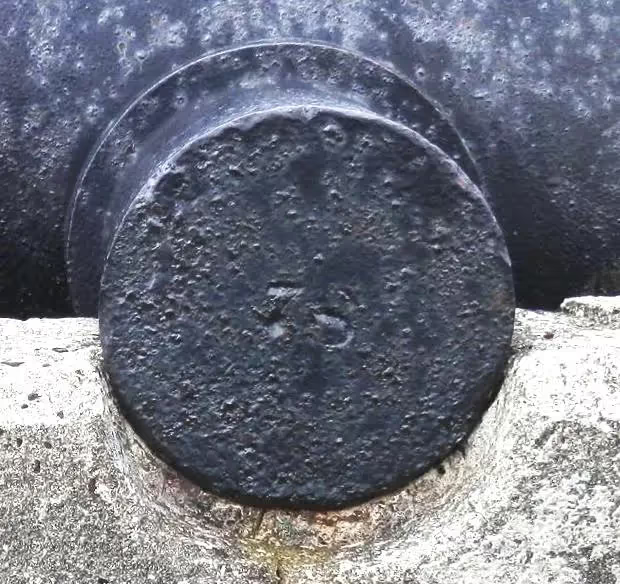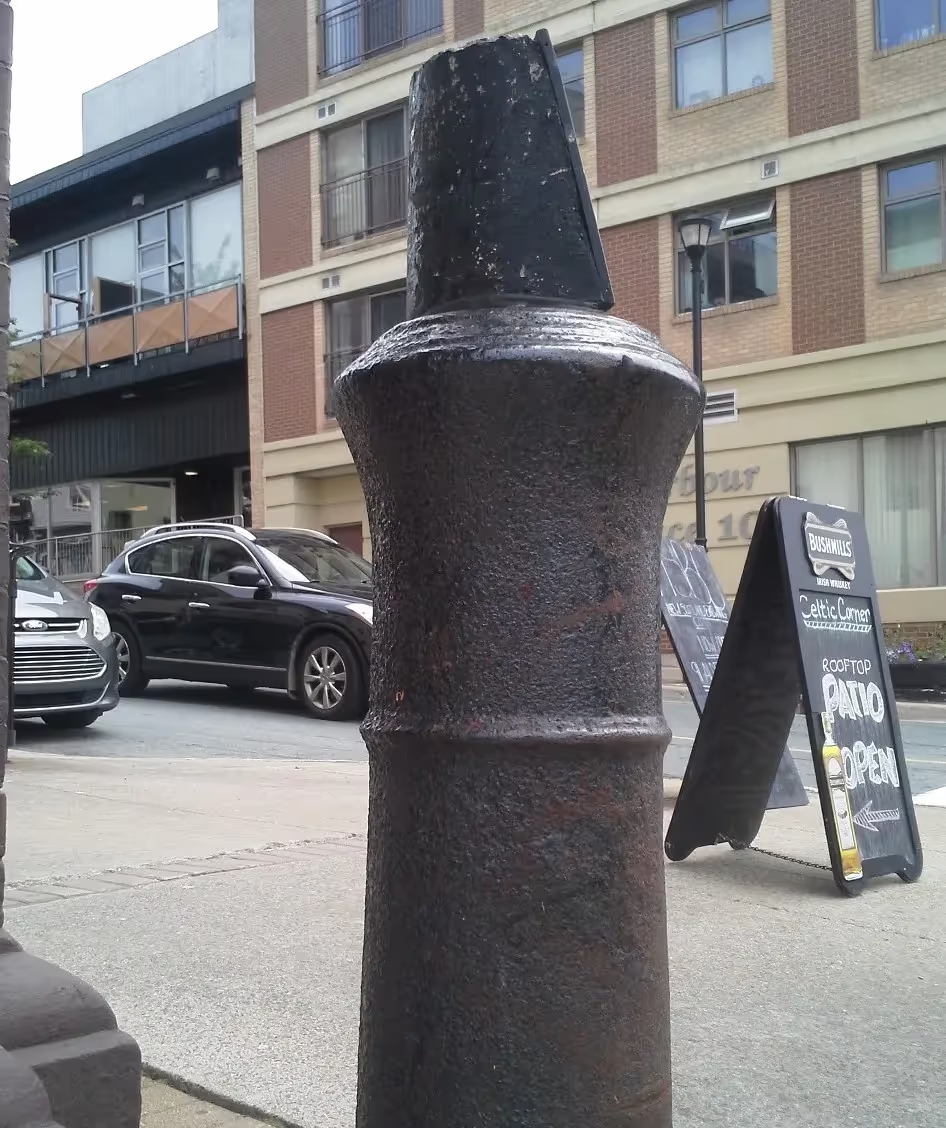Artillery in Canada (9) Nova Scotia: Fort Lawrence, Fort Point Lighthouse Park, Green Island, Dartmouth, and LaHave
Artillery in Nova Scotia, Fort Lawrence,
Fort Point Lighthouse Park, Green Island, Dartmouth, and LaHave
The aim of this website is to locate, identify and document every historical piece of artillery preserved in Canada. Many contributors have assisted in the hunt for these guns to provide and update the data found on these web pages. Photos are by the author unless otherwise credited. Any errors found here are by the author, and any additions, corrections or amendments to this list of Guns and Artillery in Canada would be most welcome and may be e-mailed to the author at [email protected].
For all official data concerning the Royal Regiment of Canadian Artillery, please click on the link to their website:
Royal Regiment of Canadian Artillery Website
Note: Back in the day, artillery in Canada was referred to by its radio call sign "Sheldrake". It is now referred to by its "Golf" call sign. (Acorn sends)
Nova Scotia
Fort Lawrence

Five guns were recorded as being displayed at Fort Lawrence by Parks Canada. None are in this location at present, although they may be preserved elsewhere:
Cast Iron 3-pounder Smoothbore Muzzleloading Gun, with a gin Naval carriage.
Cast Iron 3-pounder 7-cwt Smoothbore Muzzleloading Gun, weight 7-3-2 (870 lbs), broad arrow mark, mounted on an iron garrison carriage.
Cast Iron 6-pounder 7-cwt Smoothbore Muzzleloading Gun, weight 7-2-7 (847 lbs), mounted on an iron garrison carriage.
Cast Iron 6-pounder 7-cwt Smoothbore Muzzleloading Gun, weight unknown, No. 1 mounted on a garrison carriage.
Cast Iron 6-pounder 7-cwt Smoothbore Muzzleloading Gun, weight unknown, No. 2 mounted on a garrison carriage.
Fort Point Lighthouse Park

(South Surrey Scavengers Photo)





(Terry Honour Photos)
Cast Iron 32-pounder 45-cwt Smoothbore Muzzleloading Gun with Millar pattern breeching ring, weight 45-0-7 (5,047 lbs), 1850, Queen Victoria Cypher, Walker and Company (WC) on left trunnion, Serial No. 108 on right trunnion, mounted on a concrete stand. No. 1 of 2 guns, located on the south side of the cairn on Fort Point.
The two holes found above the Royal Cypher and at the vent are likely mounting holes for Millar’s sights, as described starting on page 381 of British Smoothbore Artillery by McConnell. The mounting holes at the breech seem to be rather close to the vent, so the mounting block must have been cut to compensate for that. (Doug Knight)





(Terry Honour Photos)
Cast Iron 32-pounder 45-cwt Smoothbore Muzzleloading Gun with Millar pattern breeching ring, weight 44-3-0 (5,012 lbs), 1848, Queen Victoria Cypher. No. 16 on left trunnion, 32 P and corroded word on right trunnion, mounted on a concrete stand. No. 2 of 2 guns, located on the north side of the cairn on Fort Point.
Green Island


(Ivan Smith Photos)
Cast Iron Smoothbore Muzzleloading Gun, Centreville, Cape Sable Island, Shelburne County. This highly corroded gun mounted on a wood stand was likely a 12 or 18-pounder possibly salvaged from a shipwreck. Archelaus Smith Museum.
Dartmouth, Albro Lake

Memorial plaque for the Mont Blanc Gun.

Photo of remnants of the blast reportedly taken 15-20 seconds after the Halifax explosion, 6 Dec 1917. Indications are that it was taken at Bedford Basin, Halifax, Nova Scotia, Canada, from approximately a mile's distance looking southeast. Photographer: unknown. Although the National Library and Archives Canada description estimates the distance from the explosion as 21 km/13 mi, the actual location and distance have never been firmly established. However, the height of the blast at its peak was measured at 3,600 metres (11,811 feet or 2.25 miles) on a sextant by Captain W. M. A. Campbell of the Canadian merchant ship, Acadian, approximately 28 km (18 mi) from the harbour approaches. This measurement is consistent with the time-frame of 15-20 seconds at a distance of 1 mile. Furthermore, documented photographic evidence from the Ron Fralick Collection (photo reference numbers: 16,274 & 16,275 - Maritime Museum of the Atlantic) clearly shows the size, shape and direction of the blast cloud as it passed by York Redoubt and indicates that the original photograph was probably taken from Bedford Basin. (Library and Archives Canada Photo, MIKAN No. 3531262), and PA-166585.


Memorial plaque for the Mont Blanc.

Mont Blanc, the only known photo of the ship, taken in 1913. The memorial stands on the site where the Mont Blanc's gun came to rest.

Mont-Blanc Gun, heavily damaged, on display near the Dartmouth Museum in the early 1950s. (Library and Archives Canada Photo, MIKAN No. 3517948)
.avif)
.avif)

Mont-Blanc Gun, heavily damaged. On the morning of 6 December 1917, the French munitions ship Mont-Blanc, inbound for a brief stop on her way to war-torn Europe with a cargo of 200 tons of TNT, 2,300 tons of picric acid, 35 tons of benzol and 61 tons of gun cotton, collided in the harbour Narrows of Halifax with the outbound Belgian relief ship Imo. The Mont-Blanc caught fire and blew up at 9:04:35 a.m., the most violent man-made non-laboratory explosion in history prior to the atomic bomb. The explosion killed 1,963 people, injured more than 9,000, and destroyed much of the then north ends of Dartmouth and Halifax. The 1,200-pound Gun from the Mont-Blanc’s stern was hurled more than two and a half kilometres over the harbour and town to Little Albro Lake. Salvaged, and displayed at various sites, it was acquired and presented to Colonel Sidney Oland to the Dartmouth Heritage Museum, which placed it in 1992 close to where the gun had come to rest in 1917. The Heritage Foundation, Nova Scotia.
Dartmouth







(Patrick Connor Photos)
Cast Iron (possibly 12-pounder) Smoothbore Muzzleloading Gun, embedded in the ground with the barrel up, heavily corroded, no markings visible, NE corner of Alderney Drive and Portland Street. There are six known surviving corner cannons in Halifax and Dartmouth, this one in Dartmouth, one by Government House on Barrington Street, one in Historic Properties, one in the Halifax Shipyard, one in the Naval Dockyard and two in Historic Properties.
Halifax
The guns on display within the City of Halifax are listed on a separate page on this website.
LaHave








(Author Photos, 6 Sep 2018)
Blomefield Cast Iron 24-pounder 50-cwt Smoothbore Muzzleloading Gun, weight corroded, mounted on an iron garrison carriage, King George III cypher (1760-1820), No. 1 of 3 guns on site.


(Author Photos, 6 Sep 2018)
Cast Iron Smoothbore Muzzleloading Gun, weight unknown, mounted on a wood naval gun carriage, No. 2 of 3 guns on site.




(Author Photos, 6 Sep 2018)
Cast Iron 12-pounder 34-cwt Smoothbore Muzzleloading Gun, weight 32-2-7 (3,647 lbs) on the barrel, left and right trunnions corroded, Queen Anne cypher on the barrel, No. 2 at a 90 degree angle above it. This gun is damaged on both ends, unmounted on the ground, No. 3 of 3 guns on site. H on the trunnion for Hamsell Furnace, Rotherfiled, East Sussex, United Kingdom.
A plaque at the site reads: “Following the Treaty of St. German-en-Laye in 1632, France determined to establish a permanent settlement in Acadia. Isaac De Razilly was appointed Lieutenant-General. Here he built a fort and established the capital of the colony.”





